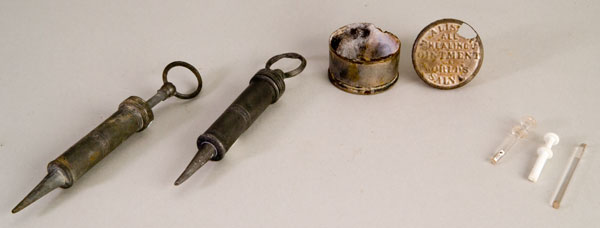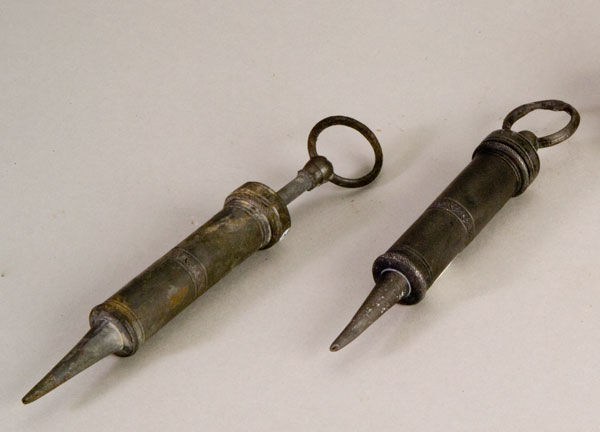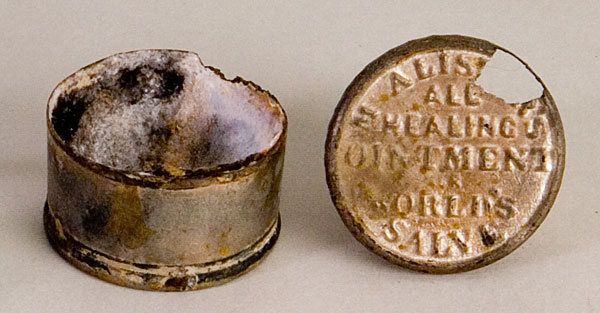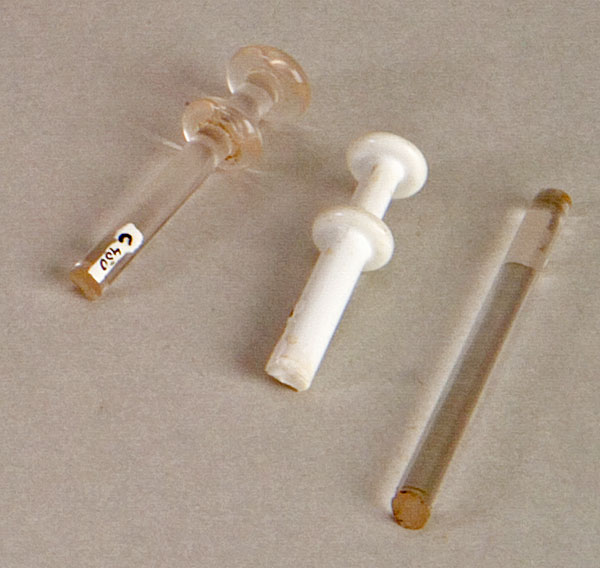Medical Equipment
Cairo Surgeon J. Otis Burt or Surgeon's Steward John W. Gerten, who before joining the ranks had been a butcher, used these syringes, tourniquet buckles, medical applicators and small tin ointment box. These are some of the very few of the medical instruments that were found. .It is thought that many of the medical instruments either were carried off the sinking ironclad or were lost during the sinking.
Syringes
c 1862
These two syringes are clysters, used in various treatments such as cleaning ears and applying medicines for venereal disease. Larger versions were used for enemas. They were a standard item of medical equipment for physicians during the Civil War. Clysters of different forms have been in use for thousands of years and are related to modern enemas and colonic irrigation treatments. The piston and cylinder design of these two clysters dates from the early years of the 17th century. The brass construction is typical of the Civil War era.
Nonferrous metal. L 13, Dia 1.9 cm
Vicksburg National Military Park, U.S.S. Cairo Museum, VICKC 1146, 1147
Ointment Box
Tin. Dia 4.1, H 2.4 cm
Vicksburg National Military Park, U.S.S. Cairo Museum , VICKC 1148
Medical Applicator
Glass. L 3.9, Dia .5 cm
Vicksburg National Military Park, U.S.S. Cairo Museum, VICKC 450
Medical Applicator
Glass. L 3.7, Dia .5 cm
Vicksburg National Military Park, U.S.S. Cairo Museum, VICKC 451
Medical Applicator
Glass. L 5.4, Dia .5 cm
Vicksburg National Military Park, U.S.S. Cairo Museum, VICKC 1145









